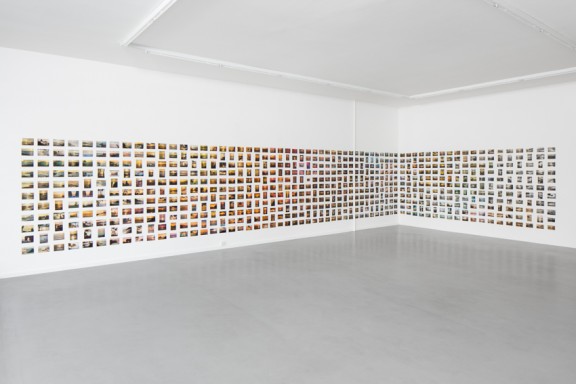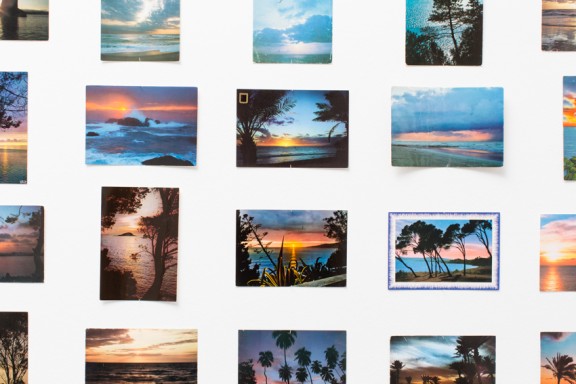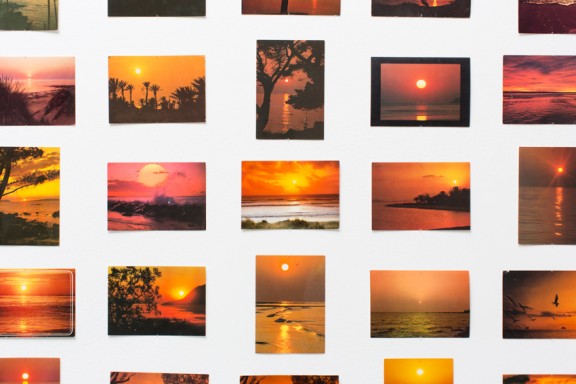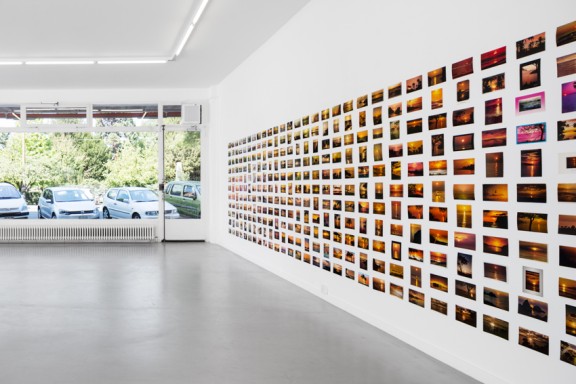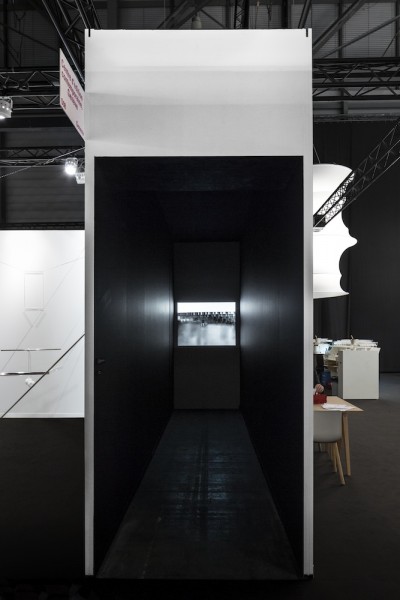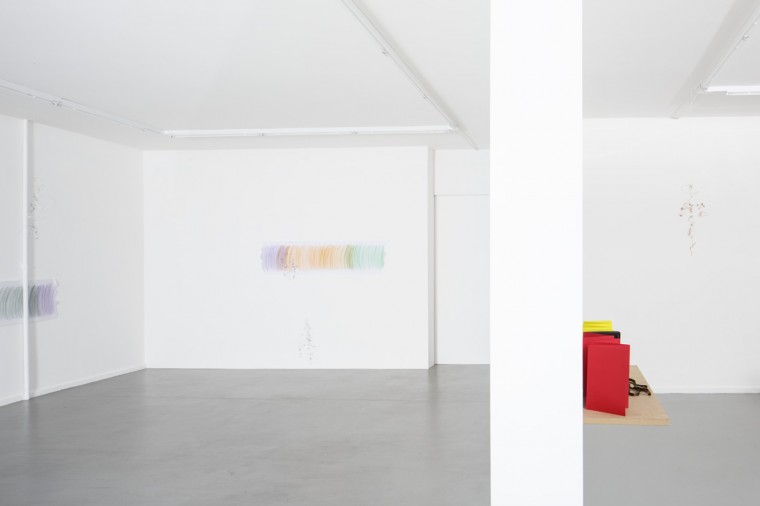Oriol Vilanova
Renoncer à te décrire
Opening during the Nuit des Bains, Thursday May 22, 2014, from 6 AM
Exhibition from May 23 till July 11, 2014
The artist as collector, Oriol Vilanova is a collector of postcards, this touristy and obsolete medium of communication that contains within itself traces of individual and collective memory. Images d’Epinal, pictures of monuments, of iconic and historical places, printed on a simple card, thus offering an idealised vision of the world, filled with nostalgia, and unchanging subjects, yet they testify of a time hopelessly lost. Oriol Vilanova often works with notions of individual and collective memory, of lost time, of the immortality of the iconic and heroic figure, of monuments and stereotypes re-enacting through writing, performance or installation an extensive visual documentation—films, publications, printed matter, postcards—and thus creating a collision and a temporal coming and going between past, present and future.
Postcards illustrate just as much the elation and the embellishment of the subject —the monuments, historical and tourist sites—as its erosion and degradation till becoming a ruin. They represent at once the magnified medium of an identity, a culture, its history and its durability as well as its irreversible lost, inoffensive and light witnesses of the passing of time, already elapsed. These stereotypical pictures seem eternal, full of fanciful and literary sadness, bleached off and worn out by their identical and infinite reproduction. These thousands of postcards offer a visual journey from the 19th to the 21st century, primarily from a Western point of view, illustrating the glorification of its history and its inevitable end.
More than the photograph, the postcard possesses an intrinsic romantic supplement that keeps traces of all the exposed messages that can be read by anyone: affectionate words, memories of journeys, trips, times of happiness and freedom. Like the image, the text is just as much stereotypical: short, simple and reduced to sentimental formulations, like keywords that make familiar connections both intimate and collective.
Even if the postcard remains the perfect medium for touristic marketing, it holds within itself the era of its production. Beyond its subject, the technique of produc- tion, the image processing—black and white, colour, lighting, framing—and the different typerfaces witness the history of printing, of advertisement, and appeal to, once again, our collective memory.
The postcard like a kind of ideal paradigm of publication, benefiting in reality from a massive, democratic and uninterrupted diffusion, reproduced infinitely and recycled continuously, outdated but periodicaly reactualized. It offers the illusion of a particular place by means of a universal medium accessible to everyone. Misplaced images that reemerge randomly very far or near from their original place. Disseminated, scattered, misplaced and then handed out again, these images are like lost parts of a whole that becomes impossible to reconstitute.
The figure of the artist-collector is of course a famous one, from Marcel Broodthaers to Christian Boltanski, from Claude Closky to Mike Kelley. The collection is a pure gesture of reappropriation, an editorial form, a commentary, that by the simple choice of a body of objects or images taken out of the mass, of dissemination or of loss recreates a particular and confined universe where accumulation and repetition oscillates between pleasure and saturation.
Oriol Vilanova roams flea markets woldwide in search of postcards that he groups together into generic subjects: triumphal arches, caves, sunsets and so on.
At the CEC and for his first solo exhibition in Switzerland, Oriol Vilanova presents one of his collections of postcards, SUNSETS FROM… and he is shows a new collection that takes up the form of an edition, ONE HUNDRED AND FIFTY, 150 different postcards representing spectacular caves from all over the world, each postcard with the inscription stamped on the back: THE COLLECTION WILL BE COMPLETE WITH THE OTHER 149 POSTCARDS, in an envelope. Edition of Centre d’édition contemporaine, 2014. Edition offered to the 2013 members of the CEC.
